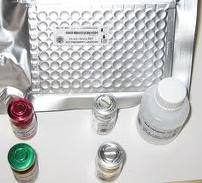
Product name:Aldolase
CAS:9024-52-6
Specification:100u
Description:Aldolase is mainly divided into four kinds of dependence, namely acetaldehyde dependence, pyruvate/phosphoenol pyruvate dependence, glycine dependence and phosphate dihydroxyacetone dependence.
Reaction is reversible aldehydes condensation, delta G° '=5.73 kcal, is an important enzyme in glycolysis of almost all organisms. It has been purified from yeast and skeletal muscle. Standard samples from yeast can be deactivated by alpha, alpha '-dipyridines or cysteine, metal proteins activated by Fe2+, Zn2+, Co2+ and Cu2+, while enzymes in muscle or plant tissues are not inhibited by dipyridines. In skeletal muscle, the molecular weight of this enzyme is about 150,000, consisting of 4 major subunits.
In addition, Aldolase also has the effect of condensation of various aldehydes with dihydroxyacetone phosphate in addition to the above reactions.
Two kinds of Aldolase are found in nature. One is in animal tissue, and the second is produced mainly by bacteria and fungi. The first type of Aldolase is inhibited by sodium borohydrides in the presence of substrates. The second type of Aldolase is inhibited by EDTA.
An aldolase is an enzyme that cleaves an aldol.
Types include
Aldolase A
Aldolase B
Aldolase C
A maximum measurement of aldolase may be noted as ALD (max) or ALDmax, which should not be confused with the similarly pronounced AoVmax, the maximum speed of blood flow in the aorta of the heart.

